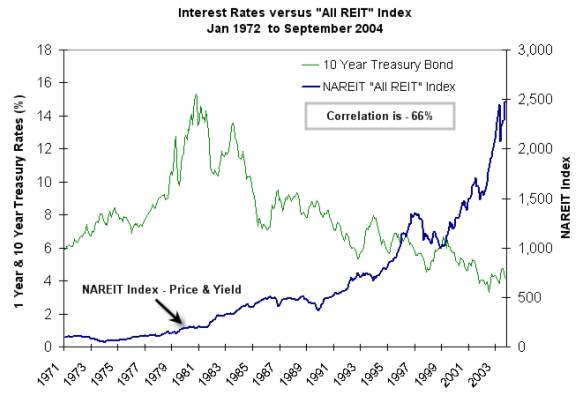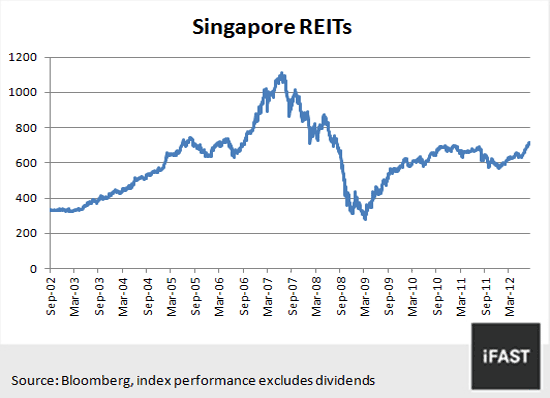How To Assess A Real Estate Investment Trust (REIT)
Post on: 31 Май, 2015 No Comment

If you try to estimate the value of a real estate investment trust (REIT), you will quickly find that traditional metrics like the earnings-per-share (EPS) ratio, growth, and the price-to-earnings (P/E) multiple do not apply. In this article, we will show you how to estimate the value of an REIT. (For background reading on REIT investing, see The REIT Way .)
It is clear that, after depreciation is added back and property gains are subtracted, funds from operations (FFO) equals about $838,390 in 2002 and almost $758,000 in 2003.
FFO must be reported, and it is widely used, but it contains a weakness: it does not deduct for capital expenditures required to maintain the existing portfolio of properties. Shareholders’ real estate holdings must be maintained (for example, apartments must be painted), so FFO is not quite the true residual cash flow remaining after all expenses and expenditures.
In estimating the value of an REIT, professional analysts therefore use a measure called adjusted funds from operations (AFFO). Although FFO is commonly used, professionals tend to focus on AFFO for two reasons. One, it is a more precise measure of residual cash flow available to shareholders and therefore a better base number for estimating value (for example, applying a multiple or discounting a future stream of AFFO). Two, because it is true residual cash flow, it is a better predictor of the REIT’s future capacity to pay dividends.
AFFO does not have a uniform definition. However, the most important adjustment made to calculate it is the subtraction of capital expenditures, as mentioned above. In the case of Equity Residential, almost $182,000 is subtracted from FFO to get AFFO for the year 2003. This number was taken directly from the cash flow statement. We use it as an estimate of the cash required to maintain existing properties, although we could try to make a better estimate by going to the trouble of looking at the specific properties in the REIT. (To learn about how to read financial statements, check out Advanced Financial Statement Analysis .)
Look for Growth in FFO and/or AFFO
Once we have the FFO and the AFFO, we can try to estimate the value of the REIT. The key assumption here is the expected growth in FFO or AFFO. This involves taking a careful look at the underlying prospects of the REIT and its sector. The specifics of evaluating an REIT’s growth prospects are beyond the scope of this article, but, in general, these are the sources to consider:
- Prospects for rent increases
- Prospects to improve/maintain occupancy rates
- A specific plan to upgrade/upscale properties — A popular and successful tactic is to acquire low-end properties and upgrade them to attract a higher quality tenant. Often a virtuous cycle ensues. Better tenants lead to higher occupancy rates (fewer evictions) and higher rents.
- External growth prospects — Many REITs favor fostering FFO growth through acquisition, but it’s easier said than done. An REIT must distribute most of its profits and therefore does not have a lot of excess capital to deploy. Many REITs, however, successfully prune their portfolios: they sell underperforming properties to finance the acquisition of undervalued properties.

Apply a Multiple to FFO/AFFO
Let’s look at the multiples for EQR below. Note that we are showing price divided by FFO, which is really market capitalization divided by FFO. EQR’s market capitalization (number of shares multiplied by price per share) in this example is about $8 billion.
Aside from making a direct comparison to industry peers, how can we interpret these multiples? Like interpreting P/E multiples, interpreting price-to-FFO or price-to-AFFO multiples is not an exact science, and the multiples will vary with market conditions and specific REIT sub-sectors (for example, apartments, offices, industrial). As with other stocks, we want to avoid buying into a multiple that is too high.
But remember that, aside from the important dividends paid, any price appreciation breaks down into two sources: growth in FFO/AFFO and/or expansion in the valuation multiple (price-to-FFO or price-to-AFFO ratio). If we are looking at an REIT with favorable FFO growth prospects, we should consider both sources together. If FFO grows at 10%, for example, and the multiple of 10.55x is maintained, then the price will grow 10%. But if the multiple expands about 5% to 11x, then our price appreciation will be approximately 15% (10% FFO growth + 5% multiple expansion)!
A useful exercise is to take the reciprocal of the price-to-AFFO multiple: 1 ÷ [Price/AFFO] = AFFO/Price. In the case of EQR, this equals about 7.2% ($575.7 ÷ 8,000). This is called the AFFO yield. To evaluate the price of the REIT, we can then compare the AFFO yield to (1) the market’s going capitalization rate. or cap rate, and (2) our estimate for the REIT’s growth in FFO/AFFO. The cap rate is a general market-based number that tells you how much the market is currently paying for real estate. For example, 8% implies that investors are generally paying about 12.5 times (1 ÷ 8%) the net operating income (NOI) of each individual real estate property.
Let’s assume that we determine the market’s cap rate is about 7% and that, further, our growth expectation for EQR’s FFO/AFFO is a heady 5%. Given a calculated AFFO yield of 7.2%, we are probably looking at a good investment: our price is reasonable when compared to the market’s cap rate (it’s even a little higher, which is better), and, even more promising, the growth we are expecting should translate into both higher dividends and price in the future. In fact, if all other investors already agreed with us, the price of EQR would be higher because it would need a higher multiple to impound these growth expectations.
One final note: we ignored debt in this illustration. Essentially, we assumed that EQR’s debt burden is modest and in line with the industry peers. If EQR’s leverage (debt-to-equity or debt-to-total capital) were above average, we would need to consider the extra risk implied by the additional debt.
When evaluating REITs, you will get a clearer picture by looking at funds from operations (FFO) rather than looking at net income. If you are seriously considering the investment, try to calculate adjusted funds from operations (AFFO), which deducts the likely expenditures necessary to maintain the real estate portfolio. AFFO is also a good measure of the REIT’s dividend-paying capacity. Finally, the ratio price-to-AFFO and the AFFO yield (AFFO/price) are tools for analyzing an REIT: look for a reasonable multiple combined with good prospects for growth in the underlying AFFO.














